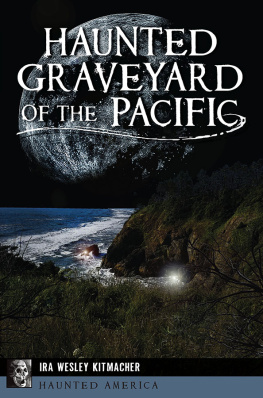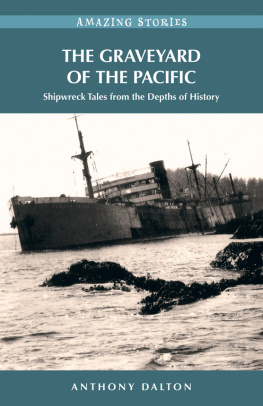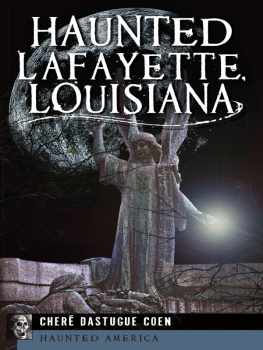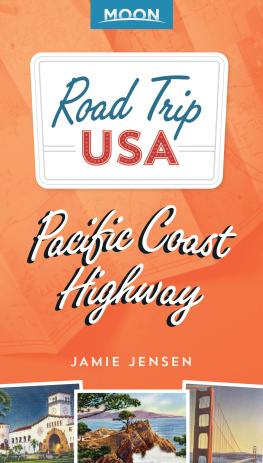
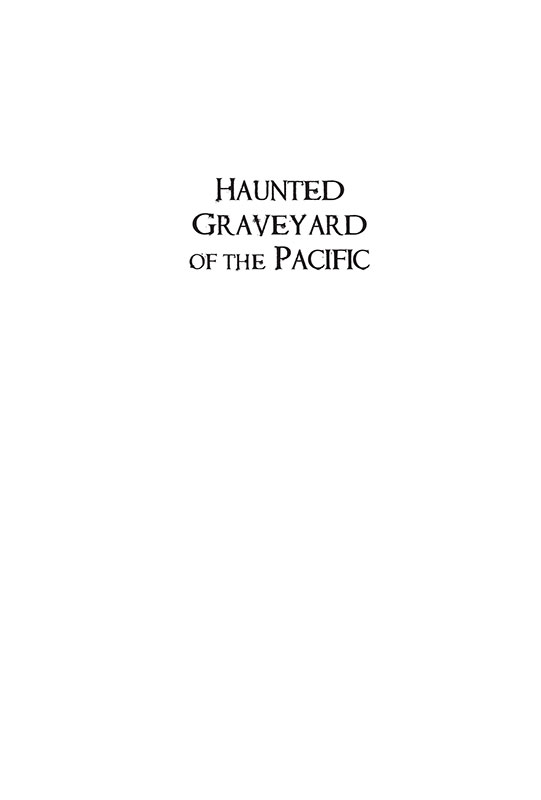

Published by Haunted America
A Division of The History Press
Charleston, SC
www.historypress.com
Copyright 2021 by Ira Wesley Kitmacher
All rights reserved
Photograph of North Head Lighthouse grounds, Ilwaco, Washington. Authors collection.
Pacific Northwest forest highway. Courtesy of Pixabay.
Photograph of the wrecked Peter Iredale, Hammond, Oregon, 2014. Courtesy of 9thstreetdesign, Pixabay.
First published 2021
E-Book edition 2021
ISBN 978.1.43967.295.2
Library of Congress Control Number: 2021937165
Print Edition ISBN 978.1.46714.950.1
Notice: The information in this book is true and complete to the best of our knowledge. It is offered without guarantee on the part of the author or The History Press. The author and The History Press disclaim all liability in connection with the use of this book.
All rights reserved. No part of this book may be reproduced or transmitted in any form whatsoever without prior written permission from the publisher except in the case of brief quotations embodied in critical articles and reviews.
CONTENTS
I dedicate this book to my beloved family.
Ira Wesley Kitmacher
INTRODUCTION
WHY I WROTE THIS BOOK
As a fairly new resident of the Pacific Northwestthe Astoria, Oregon area to be exactIm fascinated by the areas history and culture. The Pacific Northwest was one of the last parts of the United States to be explored and settled, making it seem more wild than other parts of the country.
Astoria is a rustic, beautiful Victorian coastal city that was established in 1811. It is the oldest permanent American settlement west of the Rocky Mountains and is often referred to as the San Francisco of the Northwest due to its hilly topography and architecture. South of Astoria, there are many lovely and scenic coastal towns, while the major city of Portland, Oregon, lies just inland and serves as our starting point. North of Astoria is Washington States Long Beach Peninsula, nicknamed the Cape Cod of the Pacific, due, in part, to its twenty-eight-mile-long flat sandy beach. Some say visiting Long Beach is like stepping back in time, to a simpler, quainter period. North of the Long Beach Peninsula is the wild Washington Coast, bordered by towering fir and spruce trees, as well as vast redcedar and redwood forests. The lovely city of Victoria, British Columbia (BC), Canada, lies just north of the border, while the largest city on our road trip, Seattle, Washington, serves as our end point.
Rustic seaside villages, lighthouses, restaurants, antique stores, surf shops and carnivals abound, while farmers markets and weekly tourist festivals welcome residents and visitors alike. The area is known for great boating, camping, fishing, biking, clamming, golfing, cranberry cultivation, oyster farming and tourism activities, while state parks with nineteenth-century military forts and national historic sites welcome history enthusiasts. Bald eagles, black bears, elk, deer and other wildlife call the area home, and gray whales can be spotted migrating twice a year.
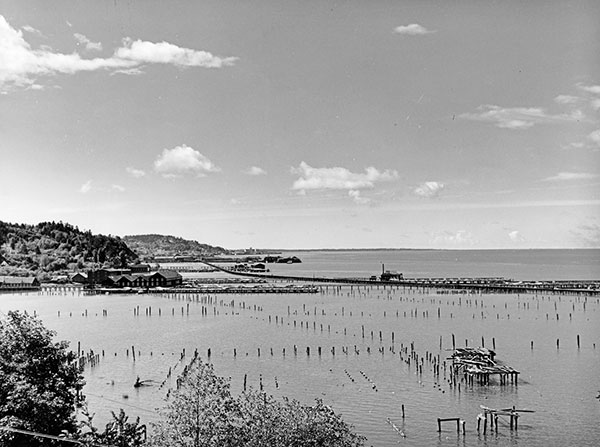
Photograph of the Astoria, Oregon waterfront, 18601920. Courtesy of the Miriam and Ira D. Wallach Photography Collection, New York Public Library.
Despite this idyllic setting, there is another, darker name by which the area is known: the Graveyard of the Pacific. More than two thousand ships and countless lives have been lost to the treacherous waters of the Pacific Ocean and Columbia River. The combination of river flow and offshore currents create an ever-shifting hazardous sand bar at the mouth of the 1,214-mile-long Columbia River (one of the longest rivers in the United States), and unlike other rivers, whose power dissipates as it drains into deltas, the Columbia River funnels water like a powerful fire hose into the Pacific Ocean. This, together with frequent thick fog and violent storms from the North Pacific have caused ships to sink, burn and be crushed against the shore. Mariners and passengers have been swallowed by the waters for as long as can be remembered. The spirits of sailors and passengers who suffered these dramatic shipwrecks are said to linger.
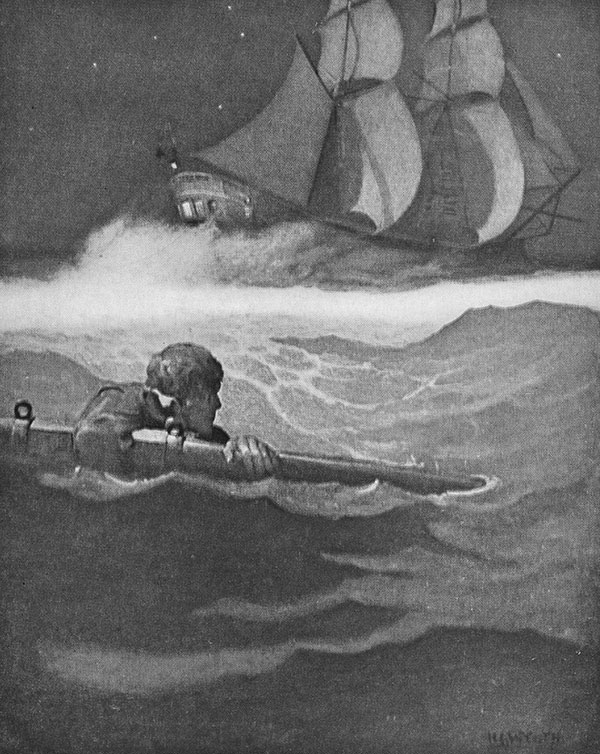
Artists rendering of a shipwreck victim, 1913. Courtesy of the Miriam and Ira D. Wallach Photography Collection, New York Public Library.
As humans, we have particularly short memories. We remember what just happened and what happened a few days or weeks ago. But few seem to remember what happened yearslet alone a centuryago. This is true of disasters as well. We remember the airline accident that happened a year ago, as it is still in the news, yet we have virtually no memory of long-ago shipwrecks (other than that of the Titanic and a few others) that resulted in multiple deaths. These disasters were all too common in the days before satellite navigation, GPS and cellphones.
The Graveyard of the Pacifics reportedly high level of paranormal activity is not limited to the sea. On land, the spirits of sailors who were shanghaied for involuntary service onboard ships, women who were kidnapped for prostitution and slavery and lighthouse keepers and their families who suffered tragic deaths are said to linger. Other lingering spirits are said to include those of early settlers, perhaps wishing to remain close to their homes and descendants or to complete unfinished business, Natives whose lands were stolen and burial grounds desecrated, murderers and murder victims and soldiers. In addition to these ghost stories, there are countless supernatural tales of Sasquatch, werewolves and legends of buried treasure.
Chilling tales of paranormal occurrences abound in this northwestern corner of America. Its no wonder that movies and television shows like the vampire and werewolf movie series The Twilight Saga, the pirate treasure movie The Goonies, the tv series Supernatural, the remake of The Fog and the drama-mystery Twin Peaks were either made or based in the region. Even the movie The Shining featured a package of Willapoint Minced Clams, which are sourced along the Graveyard of the Pacific.
The dark skies, wind, storms and fog all add to an atmosphere of mystery and dread. Damaging storms frequently strike the Pacific Northwest, devastating whole towns. The area is at risk from tsunamis, giant ocean waves caused by earthquakes; the last major tsunami struck the area in 1700 and was so powerful it swallowed entire Native villages. Reflecting this foreboding atmosphere, local landmarks are colorfully named Cape Disappointment (a ships captain was disappointed to not find the Columbia River), Deadmans Hollow (where victims of a shipwreck washed ashore) and Dismal Nitch (where Lewis and Clark took shelter during a fierce 1805 winter storm while exploring the Northwest).
So, if you see someone on land who appears out of place or hear ghostly words on the wind, check againit may be the forlorn spirit of a lost soul reaching out.
Next page
